Scotland Performs Update
Scottish Government performance scorecards and narratives as at 15 December 2016.
Social Security Committee
Scorecard
The following National Performance Framework indicators have been selected as relevant to the Social Security Committee for the purposes of the Draft Budget Consultation Period.
The report below shows recent performance on these indicators as at 15 December 2016.
The hyperlinks take you to the Scotland Performs website for the latest information on each indicator.
| Performance Improving |
|
|---|---|
| |
To narrow the gap in participation between Scotland’s best and worst performing regions by 2017 ( cohesion) Improve children’s services Reduce children’s deprivation Improve access to suitable housing options for those in housing need |
| Performance Maintaining | |
 |
To increase overall income and reduce income inequality by 2017 ( solidarity) Improve the skill profile of the population Reduce underemployment Reduce the proportion of employees earning less than the Living Wage Increase the proportion of young people in learning, training or work Increase the proportion of graduates in positive destinations Improve support for people with care needs Improve the responsiveness of public services Increase the number of new homes |
| Performance Worsening |
|
 |
Improve people’s perceptions of the quality of public services Reduce the proportion of individuals living in poverty |
Performance Improving
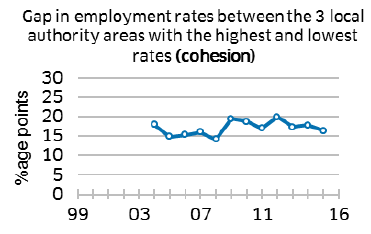
The gap in employment rates between the three local authorities with highest and lowest rates has fluctuated in recent years and is now at roughly the same level as in 2004.
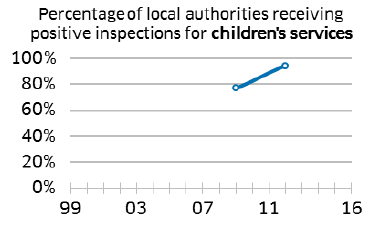
More local authorities received positive evaluations in child protection inspections in the latest period (2009-2012) than in the previous period (2006-2009).
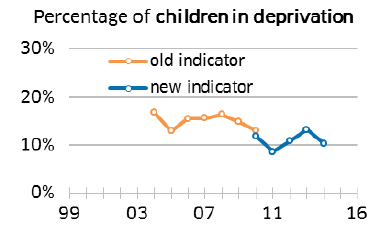
The percentage of children living in material deprivation decreased in 2014/15 following an increase in the previous two years. In 2010/11, there was a change to the questions asked in the survey.
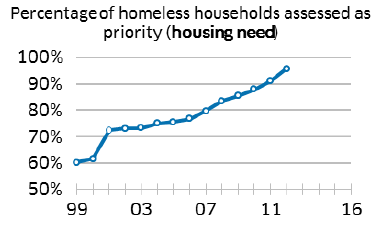
Since December 2012, all unintentionally homeless households have been entitled to settled accommodation.
Performance Maintaining
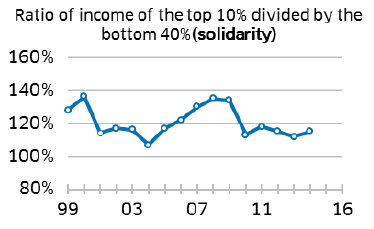
The ratio of income of the top 10% divided by the bottom 40% has remained stable in recent years, following a relatively large decrease between 2009/10 and 2010/11.
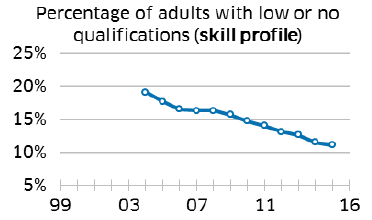
The percentage of the working age population with low or no qualifications continues to decline as part of a consistent downward trend.
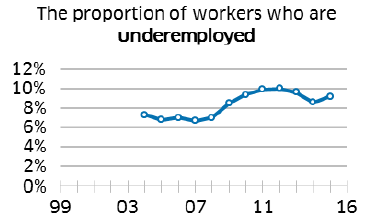
The proportion of workers who are underemployed remained stable between 2014 and 2015, following a declining trend since the peak in 2012. The upward trend in earlier years was due to the recession in 2008.
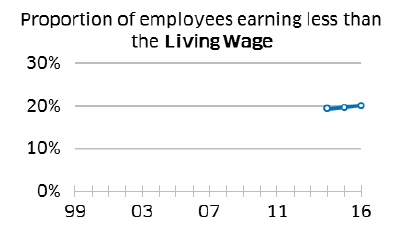
The proportion of employees earning less than the Living Wage remained stable between 2015 and 2016.
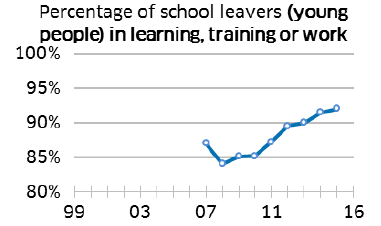
The proportion of school leavers in learning, training or work increased between 2008/09 and 2015/16.
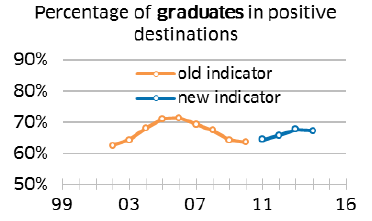
The proportion of graduates in positive destinations remained reasonably stable between 2013-14 and 2014-15, following an increase since 2011-12. Changes were made to the questionnaire in 2011-12. Previously the percentage declined from 2006-07 to 2010-11.
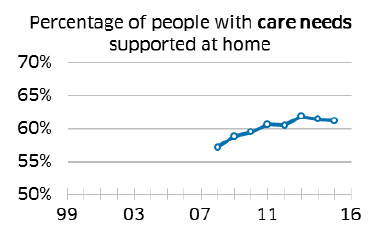
The percentage of people receiving personal care at home, rather than in a care home or hospital, remained stable last year.
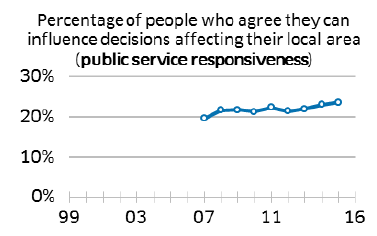
The percentage of people who agree that they can influence decisions affecting their local area has increased since 2007.
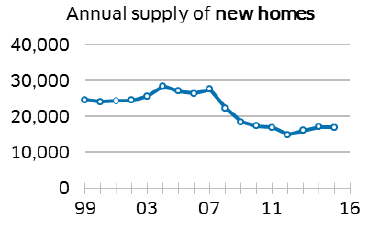
New housing supply remained stable in 2015/16, after increasing in the previous two years. This follows a significant decline between 2007 and 2012. The downward trend in these earlier years was due to a fall in private rather than social housing.
Performance Worsening
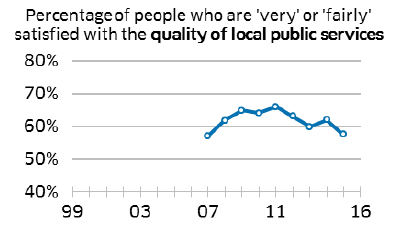
The percentage of people who are 'very' or 'fairly' satisfied with local public services has fluctuated in recent years and decreased in 2015.
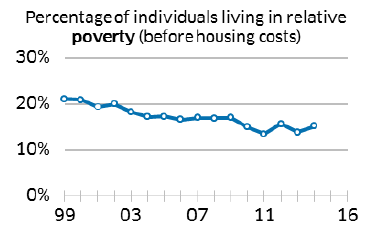
The proportion of people living in relative poverty is on a long downward trend, but has fluctuated since 2009.
Contact
There is a problem
Thanks for your feedback
